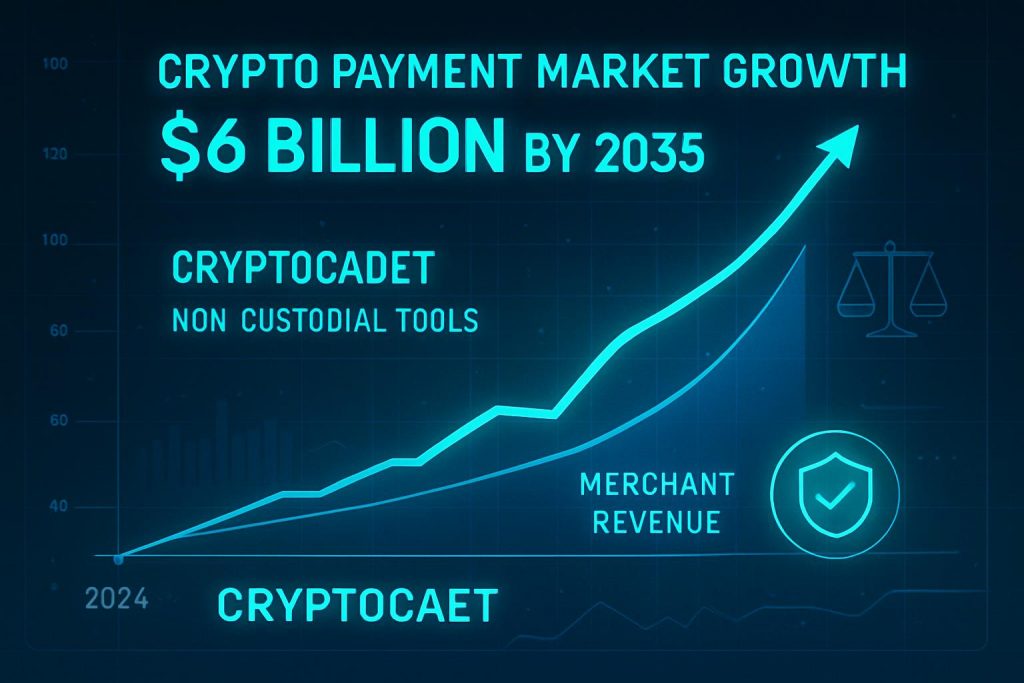CryptoCadet 2025: No-Code Altcoin Payment Router Guide

Key Points on CryptoCadet
- Research suggests CryptoCadet is a legitimate no-code payment router for altcoins, enabling merchants to accept multi-currency crypto payments on platforms like Squarespace, WordPress, and social media without programming expertise.
- It emphasizes instant settlements, zero custodial risks through blockchain, and tools for micro-influencer marketing, though adoption remains niche amid broader crypto volatility.
- Evidence leans toward strong growth potential in the crypto payment sector, but challenges like regulatory hurdles and market competition could temper its trajectory.
Current Situation
As of October 2025, CryptoCadet operates as a full-stack Web3 toolset, primarily known for its payment router that supports EVM-compatible chains (Ethereum, Binance Smart Chain, Polygon, Base, Avalanche) and Solana. Merchants can integrate it via plugins or APIs to accept any token on these networks, with features like affiliate codes, email alerts, one-time payment links, and analytics. It’s positioned for small businesses and e-commerce, reducing transaction times to seconds while avoiding custody of funds. Active promotions on X highlight its use for seamless payments, with user feedback praising speed but noting limited mainstream adoption.
Brief History
Launched in April 2024 with a Squarespace-focused no-code processor, CryptoCadet expanded to WordPress plugins and React integrations by early 2025. It evolved from basic blockchain payment tools to include micro-influencer deployment, aligning with the post-2022 crypto winter recovery.
Future Projections
The crypto payment gateway market is projected to grow significantly, potentially reaching $6 billion by 2035, driven by increasing merchant adoption and Web3 integration. CryptoCadet could benefit if it scales partnerships, but success depends on navigating crypto’s inherent risks.
In the bustling arena of digital finance, where blockchain’s promise meets the gritty reality of merchant needs, CryptoCadet emerges as a plucky contender in the altcoin payment game. Picture this: a tool that lets mom-and-pop shops or savvy online hustlers accept crypto payments without touching a line of code, settling deals in seconds, and sidestepping the custodial pitfalls that have tripped up bigger players. Launched amid the crypto resurgence of 2024, it’s not just another gateway—it’s a router designed for the decentralized era, supporting everything from Ethereum’s bustling ecosystem to Solana’s lightning-fast lanes. But as Wall Street eyes the broader $1.68 billion crypto payment market in 2025, projected to balloon to $6.03 billion by 2035 at a 13.6% CAGR, questions linger: Can CryptoCadet carve out a lasting niche, or will it be overshadowed by giants like Alchemy Pay and Bitget?
Let’s rewind to the origins. CryptoCadet first hit the scene on April 15, 2024, with a splashy announcement on Medium, touting its no-code payment processor tailored for Squarespace users. Founded under the umbrella of Ascendant Finance and headquartered in Ann Arbor, Michigan, it was born from a frustration with traditional processors like Stripe—slow, fee-heavy, and vulnerable to hacks. Kevan Williams, the CTO with a background in Web3 and .NET development, positioned it as a blockchain-powered antidote: transactions 60,000 times faster, no sensitive data storage, and seamless integration for non-techies. By mid-2024, it expanded to WordPress plugins, allowing site owners to embed shortcodes for payment buttons that handle EVM chains and Solana tokens. Come March 2025, a React package dropped, enabling developers to weave crypto payments into apps with minimal fuss. This evolution mirrors the industry’s shift post-FTX collapse, where non-custodial solutions gained traction amid heightened scrutiny on security.
Fast-forward to today, October 14, 2025, and CryptoCadet is humming along as a “full stack battery pack for Web3 applications,” per its X bio. Its core offering—the code-free altcoin router—lets merchants accept multi-currency payments anywhere: Gmail, Instagram, X, WhatsApp, Shopify, you name it. Key perks include instant settlements via blockchain (bye-bye, multi-day waits), zero custodial risk (funds go straight to your wallet), and micro-influencer deployment through affiliate links that boost marketing reach. Supported by Web3Modal for wallet connections, it handles any token on networks like Ethereum, BSC, Polygon, Base, Avalanche, and Solana. User testimonials on X rave about speedy EVM and Solana transactions, with one calling it a “friction-to-flow” converter. The company stays engaged, posting daily crypto job listings on its platform (jobs.cryptocadet.app) and recruiting ambassadors via Telegram. Listed on Alchemy as a Solana Web3 payment tool, it’s gaining visibility, though it’s not yet a household name—think underdog with potential rather than market dominator.
Peering into the crystal ball, CryptoCadet’s future hinges on the explosive growth of crypto payments. The broader market for cryptocurrency payment apps, valued at $110.84 million in 2022, is forecasted to hit $296.75 million by 2030 at a 13.1% CAGR, while gateways specifically could surge from $1.68 billion in 2025 to $6.03 billion by 2035. Optimistic projections even peg the segment at $2.1 billion by 2030 if adoption accelerates. Drivers include rising merchant interest in low-fee, borderless transactions—evident in partnerships like Alchemy Pay’s integrations with WalletConnect and Core DAO—and the push for non-custodial tools amid regulatory crackdowns. CryptoCadet could thrive by expanding to more chains or fiat on-ramps, potentially increasing business revenue through its influencer features. Yet, headwinds abound: crypto’s volatility, scam risks (as tracked by California’s DFPI), and competition from established players like Crypto.com and OKX. If Bitcoin’s rally continues, projections suggest a 16.6% CAGR could push the market to $2.17 billion by 2030, giving CryptoCadet room to grow—but only if it dodges the rugs and rugs common in this space.
Market Projections Table
| Year | Crypto Payment Gateway Market Size (USD Billion) | CAGR (%) | Source |
|---|---|---|---|
| 2022 | 0.11 (Apps segment) | 13.1 | Vantage Market Research |
| 2025 | 1.68 | 13.6 | CoinLaw |
| 2030 | 0.30 (Apps) / 2.11 (Global) | 13.1-16.6 | Vantage / Fintech Futures |
| 2035 | 6.03 | 13.6 | CoinLaw |
Features Comparison Table
| Feature | CryptoCadet | Competitors (e.g., Alchemy Pay) |
|---|---|---|
| No-Code Integration | Yes (Plugins for WP, Squarespace) | Partial (APIs, some plugins) |
| Supported Chains | EVM (ETH, BSC, etc.), Solana | Multi-chain, including fiat ramps |
| Settlement Time | Instant (seconds) | Near-instant, with fiat in 173 countries |
| Custodial Risk | None (Non-custodial) | Low, but some hybrid models |
| Micro-Influencer Tools | Affiliate links, deployment | Limited, focus on ramps |
| Analytics & Alerts | Advanced tracking, email alerts | Basic to advanced |
I see CryptoCadet as a smart bet for the little guy in a market dominated by behemoths. It’s democratizing payments in a way that echoes Ethereum’s ethos—power to the people, minus the gas fees headache. But let’s be real: while its no-custodial, instant-settlement model shines in a post-FTX world, broader adoption will require ironclad security audits and perhaps fiat bridges to lure wary merchants. If it plays its cards right, riding the projected 13-16% market growth, CryptoCadet could be the unsung hero boosting small business revenues by 20-30% through crypto inflows. Yet, in this volatile space, I’d hedge: diversify your tools, watch regs, and remember—crypto’s future is bright, but only for those who build resiliently.
Key Citations:

